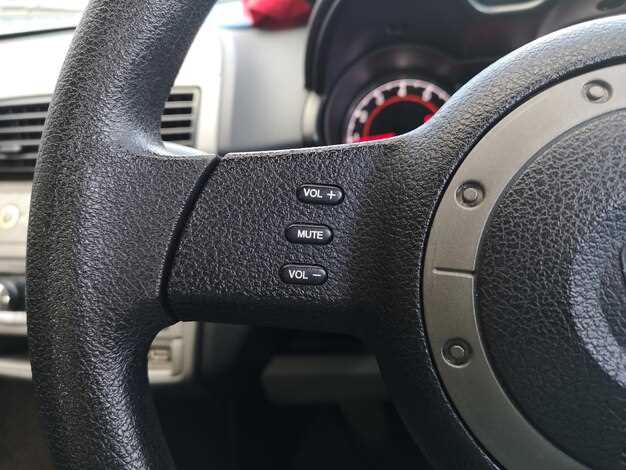
Experiencing vibrations in your steering wheel can be a concerning and uncomfortable experience for any driver. It not only affects the overall driving experience but can also signal underlying issues with your vehicle that require immediate attention. Understanding the common reasons for these vibrations is crucial for maintaining your car’s safety and performance.
One of the primary culprits behind steering wheel vibrations is out-of-balance wheels. When there is an uneven distribution of weight around the wheel, it can lead to noticeable vibrations, especially at higher speeds. Additionally, improper tire inflation can exacerbate this issue, as under-inflated or over-inflated tires can create an inconsistent contact patch with the road, affecting vehicle stability and comfort.
Another significant factor that can contribute to steering wheel vibrations is worn suspension components. Parts such as tie rods, wheel bearings, and bushings play a vital role in maintaining proper alignment and stability. When these components wear down over time, they can lead to misalignment or an unstable steering system, resulting in vibrations that can be felt in the steering wheel.
In sum, recognizing the common reasons for steering wheel vibration is essential for all vehicle owners. By addressing these issues promptly, you can improve your driving experience and ensure that your vehicle remains safe and reliable on the road.
Diagnosing Uneven Tire Wear and Its Impact on Steering

Uneven tire wear is a critical issue that can significantly affect the performance of a vehicle’s suspension and steering systems. Identifying the patterns of tire wear can provide important insights into underlying mechanical problems that may require immediate attention.
One of the primary causes of uneven tire wear is misalignment of the wheels. When the wheels are not properly aligned, it leads to excessive wear on specific areas of the tires. Common symptoms include a pulling sensation to one side while driving and vibrations felt through the steering wheel. Regularly checking the alignment can prevent these issues and ensure that the suspension components are functioning correctly.
Another critical factor is tire inflation. Under-inflated or over-inflated tires can lead to abnormal wear patterns. This not only affects the lifespan of the tires but can also alter the handling characteristics of the vehicle. Maintaining the correct tire pressure is essential for optimal suspension performance and steering stability.
Additionally, worn suspension components, such as shocks and struts, can lead to uneven tire wear. If the suspension cannot adequately absorb bumps and road imperfections, it can cause the tires to make inconsistent contact with the road, leading to irregular wear. A comprehensive inspection of the suspension system may be necessary to diagnose these issues effectively.
Regular tire rotation is another preventative measure that can help ensure even tire wear. By moving tires to different positions, the wear can be distributed more evenly. This practice not only extends the life of the tires but also contributes to the overall reliability of the steering system.
Monitoring tread depth can also indicate uneven wear patterns. Tires with significantly different tread depths can lead to compromised steering control, especially during maneuvers or adverse weather conditions. Ensuring all tires have adequate tread depth is crucial for maintaining safety and performance.
In conclusion, diagnosing uneven tire wear involves understanding the complex interaction between the tires, suspension, and steering systems. Regular maintenance and inspections can help address issues before they lead to more severe problems, ensuring a smoother, safer driving experience.
Understanding Suspension Component Failures Causing Vibration

The suspension system of a vehicle plays a crucial role in maintaining ride quality and stability. When suspension components fail, they can lead to significant issues, including steering wheel vibration. Various components within the suspension, such as struts, shocks, control arms, and bushings, directly affect the handling characteristics of the vehicle.
One common cause of vibration is worn-out struts or shocks. These components are designed to absorb shocks from the road surface, and when they lose their effectiveness, it can result in a rough ride and wheel oscillation. This instability can be felt through the steering wheel, especially at higher speeds.
Control arms are also critical in maintaining proper wheel alignment. If a control arm becomes damaged or its bushings deteriorate, it can cause misalignment, leading to premature tire wear and steering wheel vibration. A misaligned wheel affects the vehicle’s handling and can create uneven forces that transmit vibrations through the steering system.
Bushings serve as cushions between various suspension parts, allowing for some movement while absorbing shocks. Worn or damaged bushings can lead to excessive movement in suspension components, resulting in vibrations that can be felt through the steering wheel during operation.
Lastly, a failing wheel bearing may also cause vibrations. The bearing supports the wheel and allows it to rotate smoothly. A worn or damaged bearing can lead to increased friction and vibration, which is transmitted up through the suspension and felt in the steering wheel. Regular maintenance and timely replacement of worn suspension components are essential in preventing these vibration issues.
Identifying Alignment Issues and Their Effects on Steering Stability
Proper wheel alignment is crucial for maintaining steering stability and overall vehicle performance. Misalignment can lead to several problems that directly affect the handling and safety of the vehicle.
When the suspension system is out of alignment, it can cause uneven tire wear, which further exacerbates steering issues. This wear can lead to a lack of traction, making it difficult to control the vehicle, especially at higher speeds.
One common sign of alignment issues is when the steering wheel vibrates. This vibration often indicates that the wheels are not pointing in the same direction, creating a push and pull effect that can be felt through the steering system. Additionally, misalignment can cause the vehicle to drift to one side, requiring constant corrections from the driver to keep it on a straight path.
Another effect of poor alignment is the reduction of the effective range of the suspension. When the angles of the wheels are incorrect, the suspension components work harder, which can lead to premature wear and potential failure. This can influence the stability of the steering system and lead to a decrease in driving confidence.
Regular alignment checks can help identify these issues before they escalate into more significant problems. By ensuring that your suspension and steering systems are properly aligned, you can improve handling, extend tire life, and enhance overall driving safety.

